Baltimore
city in Maryland, United States
Slices of American history are around every corner in Baltimore. Maryland's largest city is a gritty old seaport town that's perhaps most famous as the site of Fort McHenry, where, at the height of the War of 1812, the sight of a tattered but defiant American flag flying over the harbor, despite a furious British bombardment, inspired Francis Scott Key to write the poem that was later adapted into the U.S. national anthem "Star-Spangled Banner". Nowadays, Baltimore's nonstop nightlife, temperate climate, tradition of hospitality (they don't call this place "Charm City" for nothing), and cultural attractions — not to mention its prime location on the juncture of Chesapeake Bay — make it one of the major tourist destinations of the Mid-Atlantic region.
- For other places with the same name, see Baltimore (disambiguation).
Districts
Baltimore has an absolutely staggering number of officially designated neighborhoods. Though some are just a few blocks in size, each has its own unmistakable character.
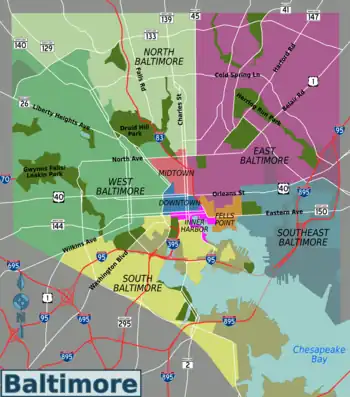
| Inner Harbor Baltimore's number one destination for visitors has its share of overpriced tourist-trap bars and restaurants, sure — but also a bevy of excellent museums, hotels, and the magnificent National Aquarium. |
| Fells Point (Little Italy, Corned Beef Row) Fells Point could not be more complementary to the Inner Harbor — great pubs, nightlife, and restaurants (especially in tiny but very authentic Little Italy) in the 19th-century period milieu of Maryland's first dedicated historic district. |
| Downtown (UMB, Lexington Market) An incongruous mix of Baltimore's central business district, the University of Maryland campus, the awe-inspiring Lexington Market, the infamously seedy "Block," a host of jewelry shops specializing in grillz, and charming Seton Hill, an area rich in religious, architectural and African-American history. |
| Midtown (Mount Vernon, Station North Arts, Charles St, Bolton Hill) One of the nicest sections of the city, home to the performing arts district, Penn Station, and a host of other attractions (Walters Art Museum, the original Washington Monument, dining and wining on Charles Street, etc.) that most visitors foolishly pass over. |
| South Baltimore (Federal Hill, Locust Point, Pigtown, Fort McHenry) Industrial blue-collar South Baltimore is dying, and is quickly being replaced with upscale gentrified neighborhoods like Federal Hill. That's not so bad from a traveler's perspective — some of the city's best restaurants and bars have sprung forth in these newly booming areas. |
| North Baltimore (Station North Arts District, Hampden, Johns Hopkins, Mount Washington) Most visitors to the area know only Johns Hopkins University and the always interesting commercial strip along Charles Street nearby. But it is unfortunate that they overlook the quirkiest of quirky neighborhoods, Hampden. |
| Southeast Baltimore (Canton, Patterson Park, Highlandtown, Greektown) A heavily industrialized section of the city, home to several very enjoyable Polish, Irish, and Greek ethnic enclaves and some other surprises. Cantonites will place their neighborhood up against Federal Hill in the gentrification derby. |
| West Baltimore (Druid Hill Park, Gwynns Falls/Leakin Park, Pimlico) Infamous West Baltimore. If you have watched The Wire, this was where the crime was taking place! But don't be fooled. There are some major tourist draws here, like the Maryland Zoo in Druid Hill Park, Pimlico Racecourse, and Edgar Allan Poe's house. And the endless old Baltimore rowhouses, no matter how rundown, remain beautiful throughout. |
| East Baltimore (Johns Hopkins Hospital, Clifton Park Golf Course, Herring Run Park) Baltimore's great rivalry between east and west is certainly an example of the narcissism of small differences. Attractions in the east are very few and far between, but things are changing fast as booming Johns Hopkins Medical Campus expands (and demolishes) in its wake. |
Understand
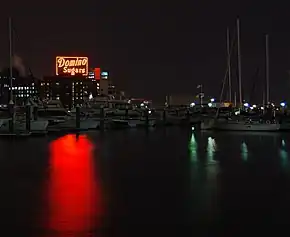
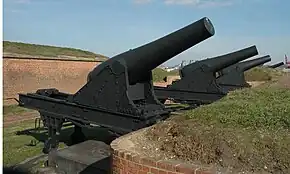
History
Baltimore's long and rich history traces its earliest roots back to 1661, when David Jones became the first white person to settle within its city limits, but begins in earnest in 1729, when the colonial government joined the patchwork of small hamlets together into the Town of Baltimore. Quickly after incorporation, Baltimore grew into one of the largest cities and most important ports in what is now the United States, and during the American Revolution also briefly served as national capital.
Perhaps the most well-known episode in the city's history is the historic Battle of Baltimore, which occurred during the War of 1812. Over the course of the battle, the British bombed Fort McHenry with rockets in a furious but ultimately futile attempt to invade, with a tattered but proud American flag flying defiantly over the fort all the while: a scene that inspired Francis Scott Key to write a poem he called "The Star-Spangled Banner", which would later be set to music as the U.S. national anthem. Baltimore's industrial importance took center stage as the 19th century wore on, thanks not only to the buzzing port but also the Baltimore & Ohio Railroad, the first one in the United States, an immensely important trade route to the American West that ran between Baltimore and the Ohio River at Wheeling, West Virginia.
Baltimore's large black population has also played an important role in its history. African-Americans have had a major presence in Baltimore since the Revolutionary War, during which time the port served as an important destination for slave ships crossing over from Africa. Later on, in the first half of the 19th century, Baltimore became one of the major centers of "free black" culture in the United States, with thousands of escaped slaves forging new lives for themselves with the help of plentifully available unskilled jobs in the port and the factories that had sprung up around it. During the 1960s, too, Baltimore was famous as the hometown of prominent African-American civil rights leaders such as Thurgood Marshall and Kweisi Mfume. African-Americans form a majority (64%) of the residents within the city limits.
Geography
Baltimore lies in an arm of the Chesapeake Bay, the third largest estuary in the world. The eastern two-thirds of the metropolitan area lie on the Atlantic Coastal Plain, between 15 and 50 feet above sea level, and contain many peninsulas jutting out into the bay. The western third of the city slowly rises into rolling hills, and leads to the piedmont region. It is about 40 miles from Washington, D.C., and approximately 100 miles from Philadelphia. The Atlantic Ocean lies about 2 hours to the southeast.
Climate
| Baltimore | ||||||||||||||||||||||||||||||||||||||||||||||||||||||||||||
|---|---|---|---|---|---|---|---|---|---|---|---|---|---|---|---|---|---|---|---|---|---|---|---|---|---|---|---|---|---|---|---|---|---|---|---|---|---|---|---|---|---|---|---|---|---|---|---|---|---|---|---|---|---|---|---|---|---|---|---|---|
| Climate chart (explanation) | ||||||||||||||||||||||||||||||||||||||||||||||||||||||||||||
| ||||||||||||||||||||||||||||||||||||||||||||||||||||||||||||
| ||||||||||||||||||||||||||||||||||||||||||||||||||||||||||||
Baltimore's climate is milder and less extreme than other U.S. cities at this latitude. Summers are humid and hot, but not extremely so, with highs generally reaching the high 80s to low 90s Fahrenheit (low 30s Celsius) and lows in the 60s to low 70s F (about 20° C). Winters are sometimes cold, but sometimes merely cool and damp — highs in the upper 40s to low 50s F (about 10° C), and lows in the 30s and 40s F (about 5° C), are typical. The temperature almost never drops below 10° F (-10° C) in the city proper. Light snow can sometimes fall in winter, although some years there is no significant accumulation and once every few years a coastal storm can dump 8 inches to a foot (20-30 cm) of snow on the city. Spring and fall bring breezy days with pleasant temperatures in the 50s to 70s F (10s to 20s C).
While weather in the region can vary, Baltimore does not experience the extremes of weather change that occur further north and inland. Visitors will be able to venture outdoors without a jacket from approximately mid-March to late November. The hot humid summers mean you'll want to wear shorts most days instead of long pants. The Baltimore area experiences pleasant fall foliage, usually beginning in mid-October and ending in early December. The long warm weather season means that swimming pools are very popular for much of the year as well.
Watch
Baltimore boasts a surprisingly influential, albeit small-scale, film industry. Self-dubbed the "godfather of filth", Baltimore native John Waters is the local equivalent of New York's Woody Allen — movie after movie of his has been set and filmed on location in Baltimore, drawing heavily on Baltimore's most bizarre subcultures and strangest neighborhoods for inspiration. He became famous for his "gore" flicks in the 1970s, which combine the single-minded purpose of grossing out (or perhaps scarring for life) his viewers along with intentionally bad acting, outrageous Baltimore accents, subversive humor, general trashy perversion, and gratuitous violence. His go-to leading "lady" was an enormous Baltimore drag queen named Divine. Of this era, Pink Flamingos achieved a certain cult-classic status, although it is absolutely not for the faint of heart (or the pure of spirit).
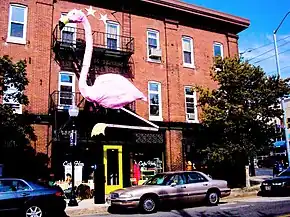
After the 1970s, Waters' films mellowed out dramatically (though his signature interest in subversive campiness is still plenty evident). This period culminated in his most famous work, Hairspray, a 1962-fabulous story of a plus-size girl with plus-size hair who wanted to bring a black boy to the locally-televised dance show in defiance of the forces of racial segregation and bigotry. Waters has also gained considerable success within the Manhattan art world — but he rails against that same art world in Pecker, a movie soaked in the local colors of Baltimore's Hampden neighborhood. His dogged loyalty to his city has earned him a lot of goodwill here: one mayor proposed creating a local holiday dedicated to John Waters, and the Hampden neighborhood erected a giant pink flamingo statue up on the main street. But don't let all this lull you into a sense of complacency — unless it's Hairspray or perhaps Crybaby or Serial Mom, don't show his films to your kids!
Barry Levinson is perhaps the second most well-known filmmaker to come out of and make films about Baltimore. His directing career began with Diner, a movie set in the Baltimore of his youth, and a movie that would begin the famous four-movie series of "Baltimore films" along with Tin Men, Avalon, and Liberty Heights.
In the world of television, Baltimore gives us David Simon, famous for his locally-set crime dramas Homicide: Life on the Street (which he co-produced with Barry Levinson), and, of course, The Wire, which has been called by many publications "the best show on television" — although several have contended this doesn't go far enough, calling it the best TV series of all time. The Wire is set principally in the most blighted neighborhoods of West Baltimore, dealing with startlingly realistic, cliché-free portrayals of the life of the city's (and America's) underclass and the drug crime that pervades the neighborhoods and housing projects where said underclass lives. A veteran reporter for the Baltimore Sun and a novelist, Simon also turns his camera on the city government, the police department, and the public schools, never in too favorable of a light. (If you are a fan of the series, check out The Wire Tour!) For an even starker portrayal of life and drugs in Baltimore's most blighted neighborhoods, check out his documentary-style miniseries, The Corner.
Don't let these crime dramas get you down, though: this aspect of Baltimore's culture is one that most visitors are unlikely to encounter. All the more reason why The Wire is practically required watching for a serious visitor — the show is filmed on location throughout the whole city, and nowhere else will you be so quickly and delightfully introduced to Baltimore in all its local character and sense of place: Baltimore club music, beautiful and dilapidated old row houses with marble stoops, the legendary horse-cart fruit vendor, coddies and pit beef, bottles of rye by the docks, the east-west rivalry, all sorts of local hip hop, a few good corrupt Polish cops, some angry young men in the projects, and above all that sense of restlessness that keeps this city alive.
Visitor information
- 🌍 Baltimore Visitor Center, 401 Light St. (between Conway and Barre on the Inner Harbor), ☏ +1 410 659-7300, toll-free: +1-877-225-8466, vc@baltimore.org. 9AM-5PM daily.
- 🌍 The "Charm'tastic Mile" of Baltimore (S. Calvert & Pratt Street (entrance to the Gallery Mall)), ☏ +1 443 851-5244. (updated Oct 2021)
Talk
As elsewhere in the United States, the primary language is English — spoken here with a thick local accent dubbed Bawlmerese (a phonetic reading of the word "Baltimorese" as locals pronounce it). Appropriately enough from a geographic standpoint, Bawlmerese could be described as a cross between the Philadelphia accent (the first syllable of "water" sounds like "wood"), Pittsburghese (the long "o" sound is pronounced closer to the front of the mouth, something like the German ö), and the Southern accent (the words "fire" and "far" sound the same). You'll hear Bawlmerese spoken most often among white blue-collar types, and more in the city proper than in outlying suburban areas. However, the classic Baltimore accent is now moribund, and most younger people speak with a general American accent.
Get in
By plane
Baltimore-Washington International Thurgood Marshall Airport (BWI) is located about 10 miles from the city center and offers non-stop flights from just about every major airport in the United States, plus a handful of international flights.
Car rental facilities are all centrally located together, away from the airport. To get there, take a free airport shuttle bus between the facility and the terminals. Plan an extra 10 to 15 minutes to get out of the airport.
You have two options for getting from the airport to the city by public transit.
- Free shuttle to the BWI Amtrak/MARC station, where you can take either an Amtrak ($7–35 one way) or MARC commuter train ($6 one way) to Penn Station, a 15-minute ride.
- Light rail which departs directly from the terminal. The ride to the Inner Harbor is about 30 minutes and the fare is $2.00.
By car
Baltimore is served by several Interstate highways: I-83 from Harrisburg and points north; I-70 from Pittsburgh and points west; and I-95, which parallels the coast from Maine to Florida, passing through most of the major Eastern Seaboard cities along the way. If arriving from the south, the I-395 spur from I-95 will take you right into the harbor area. If arriving from the north on I-95, you will have to pay a $4 toll to take the Fort McHenry Tunnel under the harbor before you hit 395. You can avoid the toll and see more of the city by exiting I-95 at Eastern Avenue (exit 59), which will take you through the diverse neighborhoods of Southeast Baltimore before terminating in Harbor East. Interstate 97 also connects to US 50 and US 301 in the south, that can be used to get into DC.
Car parking is expensive in the inner city, roughly $5/hour around the harbor area. If you're planning to stick to the central part of the city and don't mind walking, you can save money and stress by parking for free at one of the suburban Light Rail or Metro stations and taking public transit into the city.
Both of the freeways between Baltimore and Washington, DC (I-95 and MD-295, the Baltimore-Washington Parkway) can be extremely congested on weekdays: although the cities are just 40 miles apart, the drive can take up to two hours at peak times, roughly 6AM to 9:30AM and 3:30PM to 6:30PM. The MARC commuter train is often a better option.
By bus
Buses are an affordable way to get in to Baltimore, especially if you are coming from New York or Philadelphia.
- Greyhound/FlixBus serves most major cities in North America. Their station is a few blocks south of the stadium district, near Inner Harbor.
- Megabus Arrivals and departures are located on the south side of the White Marsh Park & Ride lot, located in the northern suburbs of Baltimore near the intersection of White Marsh Boulevard and Honeygo Boulevard. MTA buses operate between White Marsh Park & Ride and downtown Baltimore. Limited parking is available in the West lot only and must have a sheet of paper with the word "megabus" on the dashboard.
- Our Bus runs service to/from New York.
- You can find other bus services between New York and Baltimore at GoToBus.
By train
- See also: Rail travel in the United States
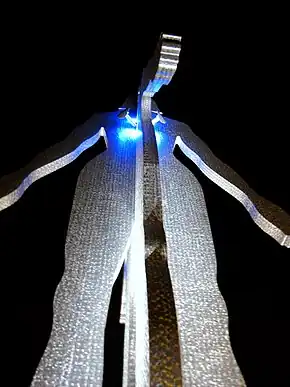
Stations
Notable stations in Baltimore for intercity trains:
- 🌍 Penn station, 1500 North Charles Street. The main station for intercity trains. About two miles north of the Inner Harbor. You can ride the Light Rail or the Charm City Circulator to get to downtown and the Inner Harbor. (updated Nov 2023)
- 🌍 BWI Marshall Airport, 7 Amtrak Way. Located 2.25 mi (3.6 km) northwest of the airport terminal. Free shuttle buses operate every 6-8 minutes between the station and the airport during the day, and every 25 minutes overnight. (updated Nov 2023)
Train operators
- Amtrak, ☏ +1 215-856-7924, toll-free: +1-800-872-7245. Operates trains throughout the United States. (updated Mar 2018) Amtrak offers frequent, fast, and comfortable service to Baltimore between New York and Washington. If your trip originates in New York, Boston, or Philadelphia, which travel the same rail corridor, the train will be much more expensive than a bus, though service from most other destinations is often comparable in price to bus fares. Whether the train is a more affordable option than the bus depends on where you're coming from. All Amtrak trains serving the Baltimore area stop at Penn Station, while some also BWI Airport station, which is in a suburban area not convenient for tourists. Routes serving Baltimore include:
- Acela travels multiple times daily between Boston and Washington, D.C. with stops in Westwood, Providence, New Haven, Stamford, New York City, Newark, Philadelphia, Wilmington, and Baltimore.
- Cardinal operating three trips weekly between Chicago and New York City with stops in Dyer, Rensselaer, Lafayette, Crawfordsville, Indianapolis, Connersville, Cincinnati, Ashland, Huntington, Charleston, Hinton, White Sulphur Springs, Staunton, Charlottesville, Culpeper, Manassas, Alexandria, Washington, D.C., Baltimore, Wilmington, Philadelphia, Trenton, and Newark.
- Carolinian between Charlotte and New York City via Washington, D.C.
- Crescent between New Orleans and New York City via Atlanta and Washington, D.C.
- Palmetto between Savannah and New York City
- Northeast Regional is Amtrak's busiest regional service, connecting Boston, New York City, Philadelphia, Baltimore, Washington, D.C., and the many towns and cities in-between. Toward the east end of the route, some trips terminate at Springfield instead of Boston. Some services also continue south into Virginia towards Newport News, Roanoke and Norfolk on three separate branch routes from Alexandria. This is also Amtrak's most frequent service, with multiple daily departures, and the longest trip takes 12.5 hours. Stops at Union Station and State Street.
- Silver Meteor and Silver Star between Miami and New York City via Savannah.
- Vermonter operates daily between St. Albans and Washington, D.C. including stops in Essex Junction, Waterbury, Montpelier, White River Junction, Claremont, Bellows Falls, Brattleboro, Greenfield, Northampton, Holyoke, Springfield, Windsor Locks, Hartford, Meriden, New Haven, Bridgeport, Stamford, New York City, Newark, Trenton, Philadelphia, Wilmington, Baltimore, and New Carrollton.
- MARC commuter trains, which operate between Baltimore and Washington, D.C. At $9 each way, it's usually cheaper than Amtrak, and generally faster than driving. The Penn Line serves Penn Station, running throughout the day roughly once per hour on weekdays up until about 10:30PM. On weekends, Penn Line service operates at much reduced frequencies. The Camden Line serves the Camden Yards station, adjacent to the Orioles stadium and three blocks from the harbor proper; however, it runs only during the morning and evening rush hours. Both routes depart from Union Station in Washington.
Get around
By public transit
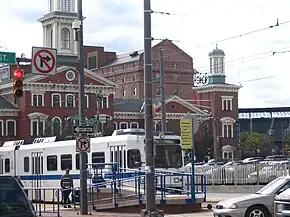
Public transportation in Baltimore is nothing spectacular. Fares to ride light rail, buses and subway are $2.00 each way, and $4.60 buys you a day pass that gets you unlimited rides on all three. You can buy the pass from any bus operator or vending machine at subway/light rail stations.
By light rail
As a general rule, the light rail system is far more useful for getting to the city than getting around within it. You may wish to park outside the city (for free!) and take the light rail in. The one useful section runs from Camden Yards up past Lexington Market to the Station North Arts District.
By subway
There is a single-line subway which runs from Johns Hopkins Hospital, through downtown, and out to the northwest suburbs of Pikesville and Owings Mills. The subway does not pass many tourist destinations and is mostly used by commuters.
By MTA bus
To get around Baltimore on the cheap by public transport, especially outside of the harbor area, the MTA buses are the way to go (though you will sacrifice convenience). MTA puts out very handy interactive maps of the downtown and regional bus routes, so you can plan ahead. Buses, like all of Baltimore's public transit, are well patrolled and safe.
By Charm City Circulator bus
Unlike the above three options, the Charm City Circulator is a city-run service. And unlike the above three options, the Circulator is free! Funded by parking taxes, several routes are now online:
- The Orange Route runs east-west between Harbor East and Hollins Market.
- The Purple Route runs north-south between Penn Station and Federal Hill.
- The Green Route runs mostly east of downtown, serving Power Plant Live, Fells Point, and the Johns Hopkins medical complex.
- The Banner Route runs from the Inner Harbor to Fort McHenry.
The buses, while smaller and quieter than the MTA trains, are more stylish and fun to ride. And they're ideal for people staying downtown looking for a very economical way to get out towards Fells Point, Federal Hill, Mount Vernon and other areas underserved by the MTA.
If staying outside the city and taking Light Rail or Metro Subway in, the Circulator routes were thankfully designed to coordinate with key stops like Baltimore Street, North Howard Street (along which the Light Rail runs), Charles Center and the Convention Center.
By car
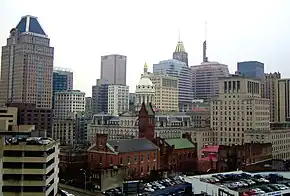
You don't need a car to visit Baltimore, but it helps, especially if you're planning to visit some of the more outlying areas of the city which are poorly served by public transit.
Baltimore has an incomplete freeway system: freeway revolts in the 1970s halted the construction of a proposed east-west freeway that would have destroyed neighborhoods including historic Fells Point, so I-83 (known within the city as the Jones Falls Expressway) and I-395 both terminate downtown without connecting to each other. This accounts for heavy traffic downtown during rush hours and on game days. Pratt and Lombard streets can be particularly slow due to the confluence of car and pedestrian traffic around the harbor. If you're headed east or west across downtown, it's often quicker to drive a few blocks north to take U.S. Route 40, even if your destination is south of Route 40.
Streets in the central region of the city follow a grid pattern, with alternating one-way streets in many neighborhoods, particularly downtown and on the East Side. In the outer parts of the city, the street pattern becomes more suburban, centered around radial roads heading into and out of the central core. Charles Street divides "East" streets from "West," and Baltimore Street divides "North" from "South" (early city planners clearly had no idea of how far north the city would grow!) Streets that don't cross Charles Street or Baltimore Street don't have a directional label. Most Baltimore street signs have the block number on them, which helps with navigation.
It's not hard to find paid parking garages and lots near all the major sights in the city center, with rates that generally increase the closer you get to the Inner Harbor. Beyond the central neighborhoods, on-street parking is widely available. You pay for street parking at electronic kiosks with either cash or credit cards — you'll get a receipt stating the time at which your parking will expire, which you display on your dashboard. Parking enforcement in Baltimore is known to be ruthless.
By taxi
If you don't have a car, Baltimore has several reliable taxi companies. Taxi fares start at $1.80 and increase by 20¢ for each 1/11 mile ($2.20 per mile) or for 30 seconds of waiting time. It's easy to hail a cab on the street downtown, in Fells Point, and in Mount Vernon, but elsewhere you'll have to call.
By water taxi
One of the most popular (and unique!) modes of transportation in Baltimore is the water taxi system +1 410 563-3901. Rarely a useful mode of transport for everyday life, it is an especially nice way of touring the city's main sights for a day (and admiring the skyline from the water). From May–September, it stops throughout the Inner Harbor, Fells Point, Fort McHenry, and even Canton, at intervals of about 15 to 20 minutes. Day passes are $20 for adults, and $11 for kids under 12.
In cooperation with the Charm City Circulator system, some routes across the harbor are also free from 7AM to 7PM, including Maritime Park, Tide Point, and Canton Waterfront Park.
By bicycle
Biking is a fun way to explore Baltimore's neighborhoods, not to mention an activity in itself. Scenic areas to explore by bike include the affluent neighborhoods of North Baltimore, the Gwynns Falls Trail and Druid Hill Park on the West Side, and East Baltimore's Patterson Park. The city center is fairly flat, although the northern part of the city can get quite hilly.
Although Baltimore hasn't achieved the bicycle-friendliness of its neighbor to the south, the city government is making an effort, slowly installing new bike lanes and marked bicycle routes. Drivers are generally tolerant, although some are liable to pass uncomfortably close (Maryland law requires drivers to allow at least 3 feet when passing a bicyclist, but it's rarely enforced). The city publishes a handy Bicycle Map, available online and in print at bike shops.
You can bring bikes on Metro and Light Rail trains. You can bring bikes on MARC trains as well, but you are required to have two bungee cords to secure your bicycle. All MTA buses (but not the Circulator) have a front-loading bike rack.
Three excellent bike shops are located in areas frequented by visitors: Light Street Cycles, located at 1124 Light Street in Federal Hill, less than a mile walk from the Inner Harbor; Baltimore Bicycle Works, at 1813 Falls Road near Penn Station; and Joe's Bike Shop at 723 S. Broadway in Fells Point. Light Street Cycles and Baltimore Bicycle Works offer bike rentals by the day.
Baltimore's bike scene has an irreverent side. Instead of a Critical Mass ride (where large groups of cyclists take over the street during rush hour to promote biking), Baltimore has the Baltimore Bike Party, a slow-paced, carousing mass ride replete with costumed riders, decorated bikes, and noisemakers. The Bike Party meets at 7PM at the Washington Monument in Mount Vernon the last Friday of every month; there's always an afterparty (and sometimes a pre-party) with food and beer.
Bicycle theft is a serious concern. You must have a strong, solid lock — a cable lock accomplishes little beyond advertising your bike as easy prey. In 2010 and 2011, there were reports of gangs assaulting cyclists and stealing their bikes after dark in the area between Midtown and Charles Village, North Avenue to 25th Street. Although such reports have been less frequent in the past couple years, it's safest to stick to well-lit, heavily-travelled streets after dark.
See
- Individual listings can be found in Baltimore's district articles
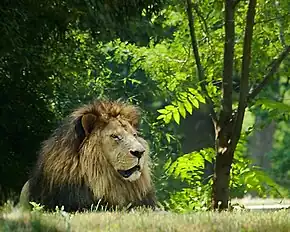
The Inner Harbor is the center of the city not only in the geographic but also in the tourist sense: it's a baffling, boisterous scene with plenty of eating and shopping, and often also live music by jazz groups, crooners, and the like. You'll hear Baltimoreans themselves scorn the Inner Harbor as a hypercommercialized tourist trap that's devoid of true local culture. While they have a point, the local perception is a bit of an exaggeration: prefab ambience or no, the harbor is a must-see attraction for visitors to Baltimore, not least because of the excellent museums and other attractions it offers. Highlights range from the Historic Ships in Baltimore (including the USS Constellation), the kid-friendly Maryland Science Center, the crowded and enormous National Aquarium, and the radically eccentric American Visionary Arts Museum. If you are into rail travel, be sure to visit the B&O Railroad Museum and the Baltimore Streetcar Museum.
For being smack-dab in the middle of the one of most historic cities in the U.S., the Inner Harbor itself is oddly devoid of history. However, the one exception to that rule is a big one indeed: Fort McHenry, which lies across the harbor at the tip of Locust Point. It gained an iconic status in American history by successfully defending the Baltimore harbor from the British naval bombardment in the War of 1812, at which time Francis Scott Key was inspired by the tattered but still waving American flag on the fort to write the poem that would later become the national anthem, the "Star-Spangled Banner".
The other marquee historical destination in Baltimore is just east of the Inner Harbor in Fells Point. Once a separate town founded in 1730, this area became wealthy throughout the 18th and 19th centuries on shipbuilding and the maritime trade (and anti-British privateering). Architecturally, little has changed for more than a century, and the cobblestone streets, old pubs, and quaint harbor area are more than enough to lure visitors.
While you won't run out of attractions to visit in the Inner Harbor, there are scads of other sites throughout the city that you should not miss. Look especially for Westminster Hall and Burying Ground downtown, the Maryland Zoo in Druid Hill Park, the original Washington Monument and the Walters Art Museum in Mount Vernon, and the Baltimore Museum of Art up by Johns Hopkins University. As well, Baltimore's rich black history and majority African-American demographics in the present make for a plethora of attractions relevant to African-American culture. The harrowing depictions of the brutality visited on African-American slaves at the Great Blacks in Wax Museum that haunt local schoolchildren's nightmares are miles away from the lighthearted kitsch you'll find at most wax museums; you'll find it in East Baltimore, on East North Avenue close to Johns Hopkins University. Meanwhile at the Inner Harbor, the Reginald F. Lewis Museum of Black History takes a more academic (and less lurid) approach.
Itineraries
- The Mt. Vernon Tour -- a self-guided walking tour of Baltimore's federally recognized national heritage area.
- The Wire Tour — a grand 3½-hour driving tour of prominent filming locations for the highly acclaimed HBO series, The Wire.
- Baltimore Composers Tour -- a 3.5-hour, self-guided walking tour of sites relevant to Baltimore-related composers.
Do
- Individual listings can be found in Baltimore's district articles
Sports
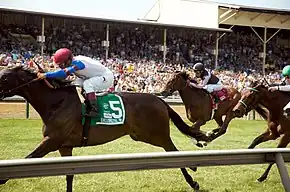
If there's one thing Baltimoreans love, it's sports — their tenacious loyalty to their local teams is remarkable even in the high-intensity world of American sports fanhood. That's especially true when it comes to Major League Baseball's Baltimore Orioles and the NFL's Baltimore Ravens, Charm City's representatives in the big four leagues of U.S. pro sports. Both of these teams' home stadiums are situated within a few blocks of each other in South Baltimore, just a stone's throw from the Inner Harbor: Camden Yards and M&T Bank Stadium, respectively.
Baltimore has teams playing in a number of smaller sports leagues, as well: the aging Royal Farms Arena downtown plays host to both the Major Indoor Soccer League's Baltimore Blast and the Arena Football League's Baltimore Brigade, while the Baltimore Nighthawks play women's football at Art Modell Field, at Mergenthaler Vocational-Technical High School in East Baltimore.
While college sports generally aren't anywhere near as big a deal on the East Coast as in the heartland, one major exception is worth noting: college lacrosse, which is more popular in Baltimore than perhaps any other American city. The Johns Hopkins Blue Jays (one of the most successful, oldest, and best-known college lacrosse teams in the United States, with nine divisional championships to their name) and the Loyola Greyhounds (famous for their string of successful seasons in the late 1980s and early 1990s) are the two big draws.
Outside of team sports, Pimlico Race Course in West Baltimore is famous as the home of the Preakness Stakes. Held every year on the third Saturday in May, the Preakness represents the second leg of the Triple Crown, a trio of thoroughbred races that represent the pinnacle of achievement in the storied tradition of American horse racing. As well, every year in October runners have the Baltimore Marathon to look forward to, which, far from a standalone event, is only the most prominent of several footraces that collectively make up the Baltimore Running Festival.
Festivals
Baltimore features a full calendar of fun festivals and events awaiting those with practically any interest under the sun. See the district articles for more on those.
One citywide event deserving of special note is Baltimore Pride, a two-day weekend festival held annually in June dedicated to celebrating Baltimore's LGBT community. There is a parade through the city, a festival in Druid Hill Park, and a block party in Mount Vernon, as well as other events.
Learn
With twelve colleges and universities attended by over 100,000 students from around the country — plus even more in the suburbs — it's not hard to see why one of Baltimore's nicknames is "College Town, USA". The largest and best-known of Baltimore's institutions of higher education is Johns Hopkins University, which offers a wide variety of degrees but is most renowned for its medical school, which consistently ranks as one of the best in the country. Other large colleges and universities within Baltimore include the Jesuit-run, Roman Catholic Loyola University Maryland, the public University of Maryland, Baltimore (which only admits students in selected professional fields, namely the health sciences, social work, and law), and the historically African-American Coppin State University and Morgan State University. Just outside the city limits is the University of Maryland, Baltimore County, better known as UMBC; unlike its Baltimore sister campus, it offers extensive undergraduate programs. UMBC, however, may now be most famous for the epic upset that its men's basketball team sprung against top-ranked Virginia in the 2018 NCAA tournament.
Buy
- Individual listings can be found in Baltimore's district articles
It will be no surprise to anyone that a huge city like Baltimore has something for everyone when it comes to shopping. The Inner Harbor boasts outlets of all the typical large national retail chains in close proximity to the tourist hotels. If small boutiques are more what you're after, try the historic marine neighborhood of Fells Point, upscale Federal Hill, or quirky Hampden. Antiquers should make sure to include a stroll along the downtown Avenue of Arts, also known as the Antique Row, where the antiques trade has dominated the retail scene for over a hundred years (although the Antique Row saw its heyday in the 1960s, it remains a great place to search for historic memorabilia or antique treasures). Of course, you'll also find a range of malls in the Downtown area.
There are often souvenir shops in many of the interesting attractions, providing expensive, but unique, items. Keep in mind that many of these are tourist traps. Wegmans and IKEA are just a short drive away.
Eat
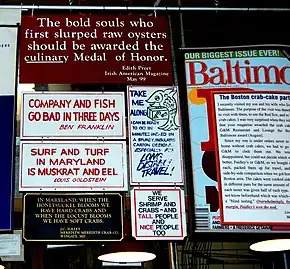
Local specialties
A wide variety of dining options can be found in Baltimore, but no visit to Maryland is complete without a sampling of the local favorite: steamed crabs! During the summer harvest season (May to September), picking crabs or indulging in a crab feast is a popular way to spend the afternoon with family and friends. However, offseason, crab may be imported from as far away as Texas. Steamed shrimp, corn on the cob, and beer are popular side dishes. If steamed crabs are too adventurous, you should at least sample a crab cake, crab bisque, or vegetable crab soup.
Then again, if crabs aren't adventurous enough, there is an impressive range of unique and offbeat local foods that most visitors never hear about, the preeminent among which is the Baltimore pit beef sandwich. An odd tradition born of the intersection of the American barbecue tradition with the culinary tastes of Baltimore's Polish immigrants, pit beef is slowly barbecued all day and night in a deep pit, then put on a kaiser roll with toppings of onions and horseradish to your liking (don't wuss out on the horseradish — it's an integral part of the experience). It's best served very rare. Unfortunately, pit beef can be hard to come by within the city limits. Your best best is probably Chaps, located next to an industrial area on the extreme east of the city.
Vying for local fast-food preeminence is Baltimore lake trout. It's a bit of a misnomer: neither is it trout (it's whitefish) not does it come from a lake. But it is impressively fresh, lightly breaded, surprisingly not so greasy, inexpensive, and just all around finger-licking good. It's a sandwich, but only in the loosest of terms; you get such a huge quantity of fish that it's impossible to actually eat it within the bun. In opposition to East Baltimore's pit beef (that petty east-west rivalry again), lake trout is decidedly a West Baltimore specialty. The question of where to get the best fish is a matter of contention, but the most accessible and visitor-friendly outlet — The Roost — is also one of the regular contenders in the endless debate.
Coddies represent the final major player in local fast-food lore. Nothing fancy here — it's a thick, satisfying cod cake served in a sandwich of two saltine crackers, ideally topped with simple yellow mustard. They can be hard to find, but you'll get great ones at Faidley's for absurdly low prices.
Save a little room for Berger cookies from DeBaufre Bakeries. These are soft, slightly dry cookies slathered with fudge frosting and are available at multiple grocery stores around town.
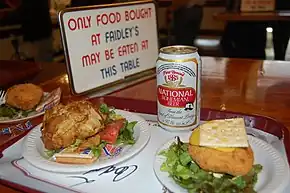
Restaurant districts
- Individual listings can be found in Baltimore's district articles
The market place, near the harbor, is full of fresh seafood and food bars. But for a more local experience, head to the neighborhoods surrounding it: Little Italy, Fells Point, Federal Hill, Canton Square, Greektown, and Mount Washington feature local and international cuisine.
Lexington Market is an especially popular lunchtime destination, with countless vendors selling all kinds of food imaginable. There are standing tables in an open area on the ground floor, as well as a large seating area on the upper level above that. If you are looking for a deep Baltimore culinary experience, head to the aforementioned Faidley's, where you can get your coddies, some of the world's most acclaimed jumbo lump crab cakes, and even local artifacts like terrapin, raccoon, and muskrat! (Those artifacts are available only seasonally, and only to take home to cook.)
If you wish for a more formal dinner (with prices to match), try the business district. Also of note is the local dinner theatre, Toby's, which for a sizable price will give you a fancy three-course buffet dinner and a roughly two-hour theatre production.
Baltimore has a smoke-free ordinance, so all restaurants and bars are completely non-smoking.
Drink
- Individual listings can be found in Baltimore's district articles
The two neighborhoods with the largest concentrations of drinking establishments and clubs are Fells Point and the Inner Harbor. Fells Point is the city's most popular district for both eating and drinking, located about a 15 minute walk or a short cab ride from downtown. Many bars in this area feature live music and most have excellent selections of Maryland and imported craft beers. Meanwhile, the Inner Harbor nightlife scene is centered on Powerplant Live!, a two-block area of nothing but bars, clubs and restaurants. It has an outdoor area featuring music and other events during good weather. This is the Inner Harbor at its most tourist-trappy — drinks and food are low-quality and overpriced — but even the hippest Baltimore hipsters will find themselves here every now and then for the free concerts. Other fine wining (or boozing) and dining neighborhoods include Canton Square, Mount Vernon, Federal Hill, Hampden, and the Station North Arts and Entertainment District.
National Bohemian (affectionately known as "Natty Boh") is the popular local cheap beer. They are generally no more than $2-3 anywhere in Baltimore, and most places serve them in cans.
The ever-rising wave of craft brewing has not passed by Baltimore. The city boasts dozens of local craft beers that can be found throughout the city (especially in Fells Point). Most craft breweries also operate their own tap rooms, welcoming visitors for a fresh pint and often a brewery tour. (If you're traveling with your best friend, Monument City Brewing is the most dog friendly brewery in the city.) The most well-established breweries are Brewers Art (inspired by the classic ales of Belgium) and Oliver's, both of which have been slaking thirsts in Charm City since the 1990s. Other notable local craft breweries include Union Craft Brewery and Mobtown Brewing, among many more exciting, younger breweries.
All bars in Baltimore (and the state of Maryland) are completely non-smoking.
Sleep
- Individual listings can be found in Baltimore's district articles
The vast majority of visitors stay in the Inner Harbor, right by the main attractions. Few cities have such a well-defined tourist district, and it is therefore no surprise that nearly all the major hotels in the city are located there.
Business travelers can certainly stay in the Inner Harbor and remain close to the central business district, and thus get better views from their rooms. But the most convenient business hotels, chain hotels all, are located downtown. The business district is not a very good location if you are looking for nightlife — after being duly creeped out by the emptiness of the downtown streets after dark, you'll only give up and head to the Harbor or Midtown anyway.
Now if you prefer to stay in a quieter area, with more local character and better dining and nightlife options, you should look to Fells Point as the natural option. However, even further off the beaten path, you can find lovely bed and breakfasts and boutique hotels in Federal Hill, Midtown, or Canton. The Midtown hotels in particular benefit from good public transportation (a rarity in the city) to Downtown and the Inner Harbor.
For those on a tighter budget, there's an HI hostel downtown, and several of the bed and breakfasts can also be a bargain.
Stay safe

Baltimore's reputation as a dangerous city was cemented internationally by the HBO series The Wire — a reputation that's not entirely unwarranted, but with which the average traveler should not get overly concerned. Most crime occurs between individuals that know each other, or in impoverished areas of the city, where tourists will have little reason to go. Few if any travelers will have any encounters with that isolated culture of drug and gang-related activity. Muggings are the crime for tourists to be concerned with.
The areas of Baltimore that attract tourists are safe. You shouldn't worry when going to the opera, museums, aquarium, etc. The popular Inner Harbor area in particular is saturated with police day and night, as the city government relies heavily on this area to bring in locals and tourists and to generate tax revenue. Some areas just north of the waterfront (downtown above the Inner Harbor around Lexington Market, and around the big public housing projects just northeast of Little Italy) can get a little dodgy after dark, and even during the day sometimes. If you're parking your car on-street in the Charles Street entertainment district or even in Fells Point, don't leave anything — even trash — visible in your car, in order to deter smash-and-grab robberies. Generally, the worst annoyance for tourists and residents around downtown are the homeless and/or drug addicts, who ask for money. Most will leave you alone if they do or don't receive anything from you. If one starts following you, it's best to ignore them and keep walking, as they almost always give up after a few seconds. Avoid confrontations or yelling back.
Above all, though, just exercise the usual precautions for any large American city: know where you are going and how you are getting there. At night, walk in groups if possible and on well-lit streets, and do not carry large amounts of money. Call a cab if the trip back at night seems beyond your comfort zone.
Connect
Some restaurants and many libraries have WiFi in Baltimore. There is free City WiFi in parts of the Inner Harbor, and it's available in other areas of Baltimore by subscription.
Cope
Publications
- The Baltimore Sun is Baltimore's daily newspaper.
- The Baltimore Banner has Baltimore's second-biggest newsroom.
- The Baltimore Brew is a local news site started by a former Washington Post reporter.
- The Baltimore Beat is a free alternative weekly newspaper. It began publishing in 2017 right after the long-running Baltimore City Paper ceased publication.
- The Bohemian is a bi-monthly alternative Baltimore magazine.
- The AFRO has served Baltimore's black community since 1892.
Consulates
 Belgium (Honorary), 799 Cromwell Park Dr, Ste. A, Glen Burnie, ☏ +1 410 863-0255, +1 410 863-0211, fax: +1 410 863-1377, leec@jsconnor.com. (updated Jun 2017)
Belgium (Honorary), 799 Cromwell Park Dr, Ste. A, Glen Burnie, ☏ +1 410 863-0255, +1 410 863-0211, fax: +1 410 863-1377, leec@jsconnor.com. (updated Jun 2017) Finland (Honorary), 2200 Broening Hwy., Suite 102, ☏ +1 410 633-4666, fax: +1 410 633-2993, dchenowith@tparkerhost.com.
Finland (Honorary), 2200 Broening Hwy., Suite 102, ☏ +1 410 633-4666, fax: +1 410 633-2993, dchenowith@tparkerhost.com.  Italy (Honorary), Equitable Bldg., 10 N. Calvert St., Ste. 940, ☏ +1 410 727-6550, +1 410 727-7297, fax: +1 410 727-6563, Info@ItalConBalto.org.
Italy (Honorary), Equitable Bldg., 10 N. Calvert St., Ste. 940, ☏ +1 410 727-6550, +1 410 727-7297, fax: +1 410 727-6563, Info@ItalConBalto.org.  Nepal (Honorary), 515 Walker Ave., ☏ +1 443 759-9383, premmahat@gmail.com.
Nepal (Honorary), 515 Walker Ave., ☏ +1 443 759-9383, premmahat@gmail.com.
Go next
- Annapolis — Maryland's charming, historic, pint-sized state capital, and home of the U.S. Naval Academy can be done as a day trip from Baltimore via public trans
- Ellicott City — a wealthy Baltimore suburb with a charming old-fashioned main street
- Philadelphia — the birthplace of American independence and the nation's sixth largest city
- Washington, D.C. — the nation's capital is home of some of America's most iconic historic sites, as well as a bevy of free museums courtesy of the Smithsonian Institution Accessible by Amtrak, MARC Train, Flixbus, and Greyhound.
| Routes through Baltimore (by long-distance rail) |
| Washington, D.C. ← Baltimore-Washington International Airport ← | SW |
→ Wilmington → New York City |
| Charleston ← Washington, D.C. ← | W |
→ Wilmington → Philadelphia |
| Philadelphia ← Wilmington ← | N |
→ Washington, D.C. → Lynchburg |
| Washington, D.C. ← Baltimore-Washington International Airport ← | SW |
→ Aberdeen → Philadelphia |
| Philadelphia ← Wilmington ← | N |
→ Washington, D.C. → Fayetteville |
| Philadelphia ← Wilmington ← | N |
→ Washington, D.C. → Raleigh |
| Washington, D.C. ← Baltimore-Washington International Airport ← | SW |
→ Wilmington → Philadelphia |
| Routes through Baltimore (by car) |
| Frederick ← Woodlawn ← | W |
→ END |
| Harrisburg ← Towson ← | N |
→ END |
| Philadelphia ← White Marsh ← Jct W |
N |
→ Arbutus → Washington, D.C. |
| END ← | N |
→ Glen Burnie → Annapolis |
| Philadelphia ← Bel Air ← | N |
→ Arbutus → Washington, D.C. |
| Frederick ← Woodlawn ← | W |
→ Jct W |
| END ← | N |
→ Linthicum → Washington, D.C. |
| Routes through Baltimore (by commuter rail) |
| Washington, D.C. ← Arbutus ← | SW |
→ END |
| Washington, D.C. ← Baltimore-Washington International Airport ← | SW |
→ Edgewood → Perryville |